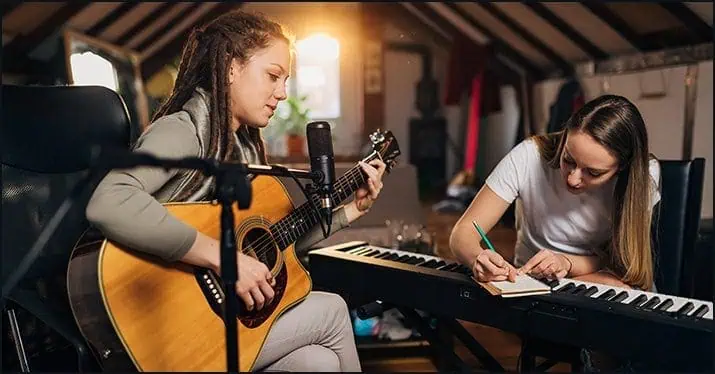How to create and use Split Sheets for collaborating songwriters
Not sure how to split the ownership of a co-write? Well, look no further! Here is a quick and simple guide to how to create split sheets, so all writers will be on the same page.
by Christine Elise Hubbard of SoundFly
Split sheets are essential for every songwriter to use and understand.
In short, a split sheet is a written agreement identifying each contributor’s ownership percentage of a musical work. This is how music royalties get broken down to make sure everyone is properly compensated and credited for song collaborations.
I always hear over and over again from new songwriters how they feel uncomfortable initiating this process when engaging in songwriting with others. Here’s my advice: get over it, and get over it fast!

This is an integral part of the music business and an essential document to have on hand to protect yourself and your musical creations. Without it, there’s little to keep you from not having your name properly attached to a song, or ever seeing a penny for the work you contributed to make that song what it is.
Oftentimes, I see people under pressure accepting less than what they deserve for a song, or worse, “taking someone’s word for it” that they’ll be “taken care of” on the backend. Spoiler alert: this almost never happens.
Without a proper split sheet executed, you risk getting a less percentage of a musical work than you deserve, or worse, nothing at all!
There are plenty of split sheet templates you can find online, or you can easily draft up one of your own. Do yourself a favor and set aside some time to create a clean template on your drive so you can have it at the ready during your next writing session.
Any split sheet should include the following:
- Date
- Song Title
- Full legal names of all contributors with mailing addresses and phone numbers, and each of their roles in the creative process labeled (ie. music/lyrics)
- Each writer’s ownership percentage based on how much they personally contributed to the song toward the lyrics and music (with all percentages adding up to 100% total)
- Whether or not a sample was used in the music, and if so, the album and artist where it originated
- Studio the song was recorded at, with address and phone number
- Record label(s), if applicable
- Each writer’s Performing Rights Organization affiliation
- Each writer’s publishing company affiliation, if applicable
- Signatures of each person involved, along with social security number and date of birth
Now that you understand the importance of split sheets and how to use them, be empowered with this information and do not be afraid to spearhead any conversation following a musical collaboration.
Most contributors will welcome this professionalism and be relieved to know you too take your work and music business seriously, and care to give them the recognition they deserve too!